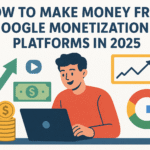Ever felt like your digital marketing efforts are just… not hitting the mark? You’re putting time, energy, and (let’s be honest) money into it, but conversions are still crawling? Don’t worry — you’re not alone. 5 Costly SEO Mistakes
Crafting a digital marketing strategy that actually converts isn’t about having a huge budget. It’s about avoiding the common traps that even experienced marketers fall into. Let’s walk through the biggest mistakes that can quietly sabotage your results — and how to fix them.

1. Skipping the Strategy and Jumping Straight into Tactics 5 Costly SEO Mistakes
This one’s huge. Too many businesses rush to post on social media, run ads, or send emails — without a real plan in place.
Think of your strategy as the GPS for your marketing journey. Without it, you’re just driving around hoping to find your destination by luck.
The fix for 5 Costly SEO Mistakes:
Before launching anything, take time to define:
- Who your ideal customer is (get specific!)
- What problems they’re trying to solve
- What action you want them to take next
- How success will be measured (clicks? sales? leads?)
Once you’ve got clarity, your tactics — whether it’s ads, blogs, or social content — will have a clear direction.
2. Trying to Be Everywhere at Once
With so many digital channels out there, it’s tempting to try them all — Instagram, LinkedIn, TikTok, YouTube, email, PPC… the list never ends. But spreading yourself too thin often means doing everything badly instead of a few things brilliantly.
The fix:
Pick 1–2 platforms where your audience actually spends time and focus your efforts there. Master those before expanding.
For example, if you’re targeting professionals, LinkedIn and email marketing might outperform flashy TikTok videos. It’s not about being everywhere — it’s about being effective where it matters.
3. Ignoring Your Website’s Foundation & 5 Costly SEO Mistakes
You could have the best ads in the world, but if they lead to a slow, confusing, or outdated website… goodbye conversions.
Your website is your digital storefront. If it’s messy or hard to navigate, visitors won’t stay long enough to buy or sign up.
The fix:
- Make sure your site loads quickly (3 seconds or less is ideal).
- Use clear calls-to-action (“Book a Free Call,” “Get Started,” etc.).
- Keep your design clean and mobile-friendly.
- Ensure your message is instantly clear — what you do, who you help, and why it matters.
4. Forgetting About the Customer Journey
Here’s a big one: expecting someone to convert immediately after seeing your ad.
People rarely buy after just one touchpoint. They need time to get familiar with your brand and trust you. That’s why nurturing is key.
The fix:
Build a funnel that gently moves people from awareness to action.
- Start with valuable content (blogs, videos, lead magnets).
- Follow up with retargeting ads or email sequences.
- Offer something irresistible when they’re ready to take the next step.
Even with a small budget, automating parts of this process can make a massive difference.
5. Neglecting Data and Testing
Marketing without data is like flying blind. If you’re not tracking what’s working — and what’s not — you’ll keep wasting money on the wrong things.
The fix:
- Use free tools like Google Analytics, Meta Ads Manager, and Hotjar.
- Test headlines, visuals, and CTAs regularly.
- Double down on what works and drop what doesn’t.
Even small tweaks — like changing your ad copy or button color — can boost conversions dramatically when guided by data.
6. Focusing Only on Sales, Not Relationships
Yes, conversions matter. But pushy, salesy messaging can turn people off fast. In today’s digital world, trust and authenticity are everything.
The fix:
Shift from selling to helping. Offer value first — share insights, tell stories, and engage genuinely. When people trust you, conversions follow naturally.
Remember, people buy from brands they like, trust, and remember.
7. Not Having a Clear Budget Plan
Small budget doesn’t mean no budget. The mistake many businesses make is spending randomly — a little here, a little there — with no real tracking.
The fix:
Create a mini marketing budget with clear allocations:
- Content creation
- Paid ads
- Email tools or automation software
- Analytics and optimization
That way, every dollar has a purpose and a potential return.
Final Thoughts: It’s Not About Spending More — It’s About Being Smarter
Building a digital marketing strategy that converts isn’t reserved for big brands with deep pockets. It’s about clarity, focus, and smart execution.
Avoid these mistakes, keep testing and refining, and your small budget will stretch a lot further than you think.
So, if you take one thing away from this — let it be this: Success in digital marketing doesn’t come from doing more. It comes from doing the right things better.
What about you?
Have you made (or fixed) any of these mistakes in your own marketing journey? Share your experience below — your lesson could be exactly what someone else needs today.
Read Google Monetization Platforms visit Lawyer Hasen Mh





